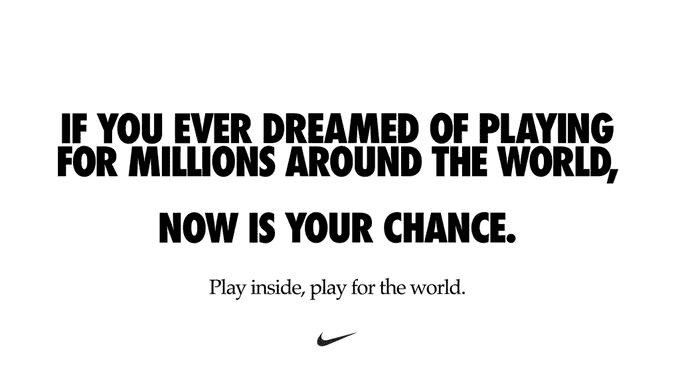It’s safe to say that many of us will look back un-fondly on 2020 in a few years time. We have experienced some of the most tumultuous events that will ever happen in our lifetimes. But what has it taught us? What positives can we take away? And how have these positives helped shape marketing and the way brands interact with consumers?
Admittedly, there is a lot of COVID fatigue and many tenuous links between ‘these times’ and the marketing world, but it’s something we need to be talking about as an industry. We’ve had a forced shift in attitudes and behaviours, and everything brands had deduced up until this year has been turned on its head. Everyone had been talking about brands breeding ‘real change’ and ‘authenticity’ for years, and this year more than ever, it has come to fruition.
How has the global response to COVID-19 reshaped a year in marketing?
#1 Homeworking and lockdowns
What happened?
Unless you live under a rock, you have likely been subject to some kind of lockdown this year, or find yourself working remotely. This was unlike anything anyone had ever experienced, and made us act in ways we were unfamiliar with. There was, and is still, a heavy reliance on technology and video conferencing tools. Remote communication was a barrier we have had to embrace as we’re faced with an array of different emotions each day.
How did it affect brand marketing?
Some brands had to pull campaigns that could have been considered insensitive, completely rethink messaging and find new ways to engage with audiences that were feeling less than themselves. There was less of a focus on selling and more on connecting with audiences, showing genuine empathy and sharing messages and stories of hope. Any fabricated attempts were quickly shot down.
Getting this right is a delicate balance. Back in May, Marketing Week UK found “brands that avoid generic messages about staying at home, togetherness or looking to the future with optimism are more likely to resonate with consumers during the pandemic”. By offering clear, helpful advice when people were concerned about new rules, this campaign by Tesco featured highly in their round-up of the best ads in early lockdown.
However, there have been exceptions from brands who’ve had to completely rethink campaigns due to restrictions. With sporting events cancelled, there wasn’t much to bet on this year. But Paddy Power still managed to find a way to stay in the lives of their audience with the usual sense of humour we’ve come to expect.
Like Paddy Power, Nike found a way to reach consumers without joining the sea of same in ‘these uncertain times ‘. Instead, they stayed true to their existing brand purpose to help encourage social distancing.

All three are great examples of brands keeping their cool in a crisis, without claiming to be the solution.
#2 Community spirit
What happened?
While COVID can be blamed for keeping everyone physically apart, it’s also responsible for bringing us closer than ever before (figuratively speaking, of course).
Many issues were catapulted into the spotlight, that has otherwise been left unaddressed in the past. In many parts of the world, a sense of community was reignited and people called upon big brands and corporations to help those in need.
How did it affect brand marketing?
Purpose is now much more than a buzzword, it’s an action and something every brand must embrace. If your purpose wasn’t established or front-and-centre prior to the pandemic, it can be difficult to launch it without seeming disingenuous. The best thing you can do in this situation is to hold a workshop with your teams to establish exactly what it is you stand for — if your purpose has come directly from your people, there’s nothing inauthentic about it.
Data analytics and research company, Kantar, put together a COVID-19 Barometer to explore how people have been feeling and acting throughout the pandemic, and what that means for marketing and comms.
A key finding is that consumers are expecting big brands and corporations to help; “top three comms strategies among consumers include talking about how the brand is helpful in the new everyday, keeping them informed about the brand’s reaction to the new situation, offering a reassuring tone ”
Craft beer brand, Brewdog, have always been excellent at reacting to current events and were among the first to repurpose their production lines to supply the NHS, charities and people in need with hand sanitiser made at one of their distilleries.
Dyson also made a huge impact by using their engineering capabilities to manufacture ventilators and help tackle the nationwide shortage.
Building life-saving equipment isn’t a viable option for every brand, but even finding simple ways to make a difference to those most affected by the Coronavirus will affect long-term trust and opinion in a big way.
#3 Teams getting smaller
What happened?
The pandemic left many marketing team members furloughed or made redundant. There were also company-wide hiring freezes and freelance help put on hold or cancelled altogether.
Those still in the office had to quickly adapt to working from home — with smaller teams, no face-to-face meetings and the added pressure on mental health and wellbeing from the pandemic.
How did it affect brand marketing?
It’s been vital for companies to restructure their approach and support their teams working remotely.
Marketing teams around the world have had to face problems head-on by:
- Embracing digital productivity tools and instant messaging services.
- Promoting empathy and clear communication between teams.
- Providing more mental health and well-being initiatives.
- Creating support networks for furloughed employees, people who’ve been made redundant, and freelancers worried about the future.
The way companies act now will have lasting effects on the success of their marketing teams. A robust remote hiring and onboarding process and empathetic work environments that offer extra support for parents and caregivers will be among the most important factors.
#4 Brands weighing-in on important issues
What happened
With global brands under a brighter spotlight to use their influence responsibly, they have been taking to various platforms to offer clarity among the chaos, encourage their audiences to do the right thing and call out those who aren’t.
There is the increasing realisation that if a brand is putting profit over people during the COVID-19 crisis, they will lose consumer trust forever.
How did it affect brand marketing?
Countless brands focussed on sharing social distancing reminders and information, or finding a link to certain aspects of life during the pandemic. What’s proved more important, is the ability to show empathy on a personal level, being useful and being part of a community.
Heinz maintained brand awareness through their partnership with Magic Breakfast — a UK non-profit providing healthy school breakfasts to children at risk of hunger. When schools closed nationwide, Heinz committed to providing 12 million free breakfasts for children who would usually benefit from breakfast club programmes.

As the UK’s first lockdown eased and the government encouraged people back into the office, Dettol misjudged many people’s concerns about returning to normality a little too soon.
The ads at Euston underground station went viral for all the wrong reasons (with Twitter taking particular anguish at the thought of ‘putting on a tie’ and ‘proper bants’).
We can learn from both examples when it comes to how people react to brands using a sensitive issue to promote themselves. If it’s genuine, helpful and well-thought-out, the brand will come across as a warm and positive influence in their lives. If a campaign wrongly assumes how people are feeling, then the opposite is true.
The events of this year are no longer a temporary disruption to the marketing norm, brands are now seriously rethinking their purpose, strategies and overall marketing direction. These moves are no longer considered to be simply adapting to a temporary situation, but wholesale mindset changes that will affect the way we interact for the foreseeable future.
It’s already becoming clear that the way marketing teams react to current events and adapt to change — and how fast they do it — will have a huge long-term impact on their consumer perception and success post-COVID.
